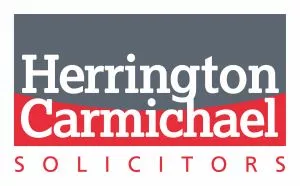- in United States
- within Law Department Performance topic(s)
Businesses with established brands may find themselves in the unfortunate situation of discovering that another company or individual has tried to exploit their brand identity by registering UK trade marks at the Intellectual Property Office ('IPO').
If someone else has applied to register a trade mark similar to yours, you may have legal recourse against them.
How does trade mark registration work?
A trade mark can include words, sounds, logos, colours, or a combination of any of these things, so long as it is distinctive and not misleading. It must be confined to specific 'classes' of item, such as 'clothing, footwear, and headgear' (class 25) or 'non-medicated cosmetics, perfumes, and essential oils' (class 3). A trade mark application may be made in multiple classes, such as the two examples here which are commonly combined by big fashion brands e.g Chanel.
To register a trade mark, the applicant makes an application to the IPO online or by post, accompanied by a fee. The IPO will examine the application and, if it is satisfactory, the IPO will publish it after approximately two weeks.
After the mark is published, there is a two-month period in which potential opponents need to display their intention to oppose the registration, otherwise it will be registered in the applicant's name.
There are procedures for removing (i.e. 'revoking' or 'invalidating') a trade mark at the IPO once it is registered, but these sometimes prove more difficult and time-consuming. If you are able, it is best to try and prevent a trade mark from being registered in the first place and take specialist advice as to how to approach the task.
How do I oppose a trade mark application?
To successfully oppose a trade mark application, you must have clear grounds for doing so and notify the IPO that you intend to oppose the application in good time.
This may involve filing a Notice of Threatened Opposition, which provides you with an additional month to file a full response, for a total of three months from the date of publication.
Before the given deadline, you will need to file a formal opposition at the IPO and pay a fee which varies depending on the grounds you are relying on.
Common grounds for opposing a trade mark application include, but are not limited to:
- The trade mark is identical or similar to an earlier registered trade mark in the same or similar classes.
- The trade mark takes unfair advantage of, or is detrimental to, the distinctive character or reputation of an established trade mark. For example, if consumers are likely to be confused as to which products belong to which brand or business.
- The application was made in bad faith. For example, the applicant wants to wrongfully prevent someone from using the mark or wishes to sell it on.
You will need to provide details in support of the grounds you rely on for the opposition so that the IPO and the applicant can understand your case.
If the applicant feels that they can contest your grounds for opposition, they may within two months of the date of your opposition file a Defence and Counterstatement. If this happens, then the matter will proceed to exchange of evidence, and proceedings can quickly become more complicated. The entire process of even a straightforward opposition may take upwards of 9 to 12 months.
If you seek assistance opposing a trade mark application, our specialists can advise you at every stage of the process, from initial opposition statements to evidence submissions.
What are the likely outcomes?
Successfully opposing a trade mark application can mean that the trade mark is not registered at all, and in such cases the IPO may decide to award you some of your costs. If you then wish to register the mark yourself (or on behalf of your company), you will need to follow the process outlined above for applying to register the trade mark.
Your opposition may be partially successful, in which case the IPO might register some of the applicant's goods or services and refuse others. For example, an application to register a trade mark in classes 3 and 25 for perfume and clothing may be opposed because it is very similar to the opponent's established clothing brand. In which case, the IPO may decide that the mark can still be registered, but only in class 3 for perfume.
If you are unsuccessful in opposing the application, you may be liable to pay some of the applicant's costs. It is therefore very important to take legal advice in relation to any prospective opposition to ensure the greatest chance of success.
In light of these risks, you may choose to negotiate an agreement with the applicant where they agree to withdraw or vary their trade mark so that it no longer adversely affects your business. A commercial compromise such as a coexistence agreement is often the best solution to a trade mark dispute that avoids lengthy correspondence with the IPO. Such remedies should be approached with caution, and it is best to seek advice even where an arrangement seems simple as it may seek to bar you from further protective action.
The content of this article is intended to provide a general guide to the subject matter. Specialist advice should be sought about your specific circumstances.



